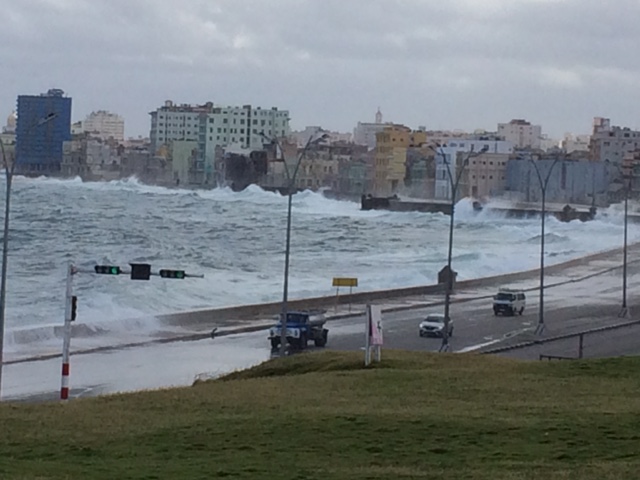Transportation in Cuba is unlike anywhere else we have been. Of course there are the '50s cars that everyone loves to see. And they really are everywhere. These ones are parked on a cobbled street in Trinidad. Not sure if there's room for another one to pass here.
Old car aficionados (and there was one on our tour) just go nuts in Cuba. Harry also enjoyed identifying the different models. Most of them have had multiple paint jobs and fix-ups, and some even have Japanese engines in them now. Some of these are used as taxis and some are owned by Cubans, but it looks like in Havana at least, the majority are used for tourism.
 |
This car was parked outside of a tobacco farm in the Vinales valley. Notice the pictures of Che and Fidel on their water tank.
This one is parked in Trinidad waiting to be hired for a tour.
Full disclosure: our tour included a drive around Havana in one of these. We got a pink one that sounded and felt like the transmission was about to fall out.
 Here are a couple of people from our tour in a green painted car. Bill took probably hundreds of phots of the cars we encountered. The photo below is taken from a hotel rooftop in the touristy part of Havana. You can see just how many of these cars are driving around,
Here are a couple of people from our tour in a green painted car. Bill took probably hundreds of phots of the cars we encountered. The photo below is taken from a hotel rooftop in the touristy part of Havana. You can see just how many of these cars are driving around,
Here's the driver of our pink car taking us around the city. But notice on the left there is a bicycle taxi and another taxi (probably a Lada from Russia). These are the non-tourist transportation options in Havana.
 But out in the countryside and in the smaller towns the horse and cart is the mode of transit. It could be a four-wheeled wagon....
But out in the countryside and in the smaller towns the horse and cart is the mode of transit. It could be a four-wheeled wagon....
This wagon has hunks of meat in it. Maybe it's a delivery van.
And this one is a gravel truck. They had the horse back the cart up onto the sidewalk so they could dump the gravel and sand inside the door.
Here are few more bicycles and bicycle taxis. Most of them appear to be home-made.


This last one shows a horse and cart and an 50s car and a Chinese tour bus, which is the other form of transport that is seen everywhere. They have a difficult time on the narrow cobblestone streets but they're pretty common.
Next time I'll tell you about our tour and where we went.





























